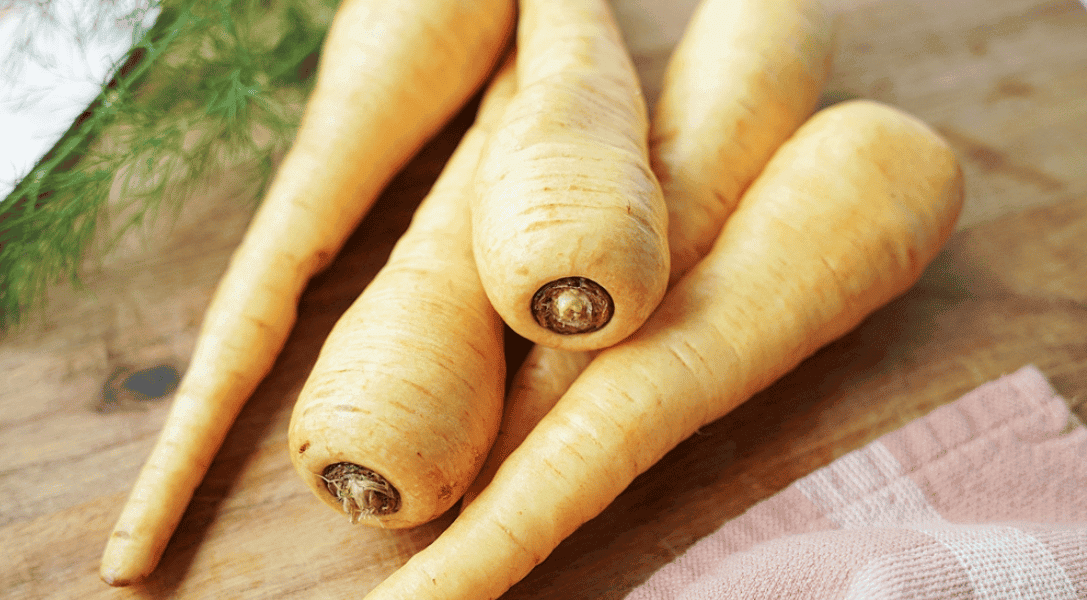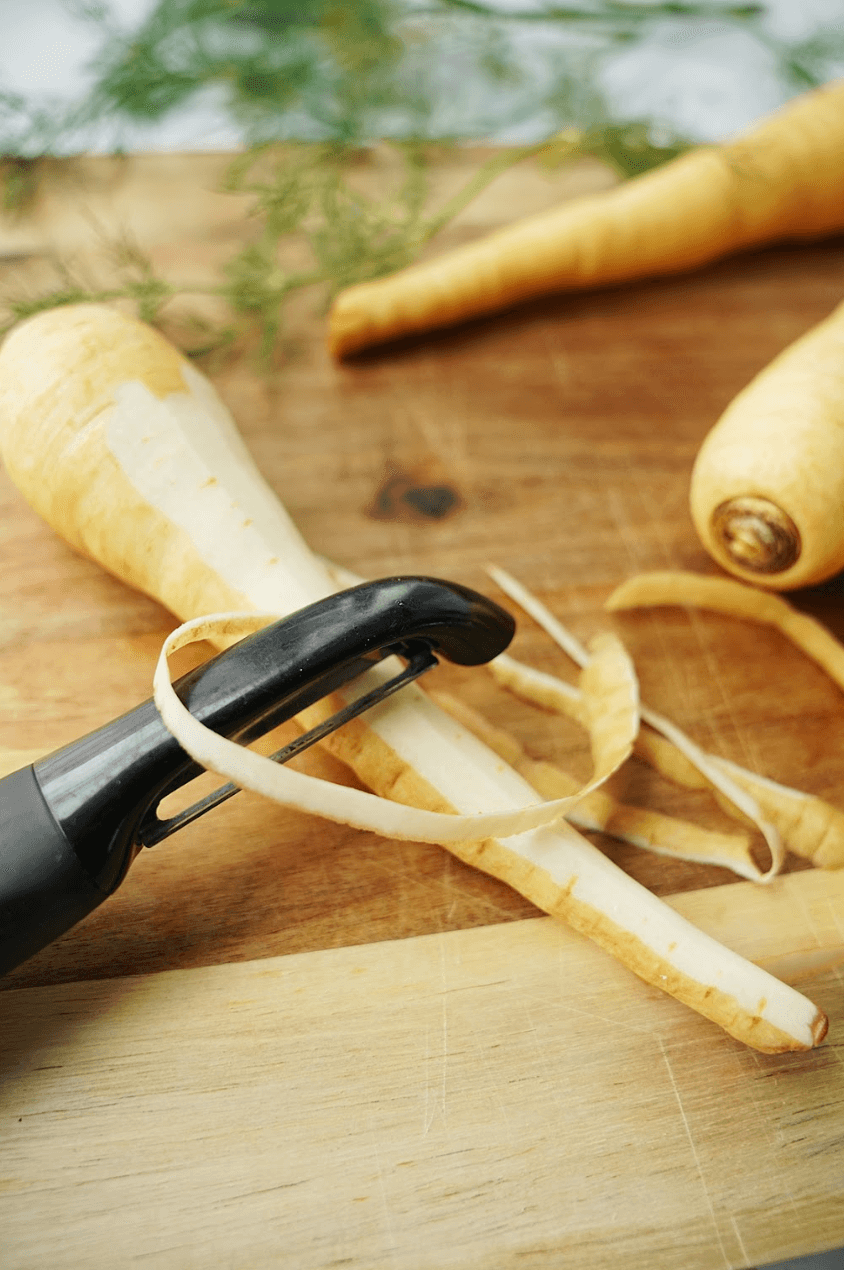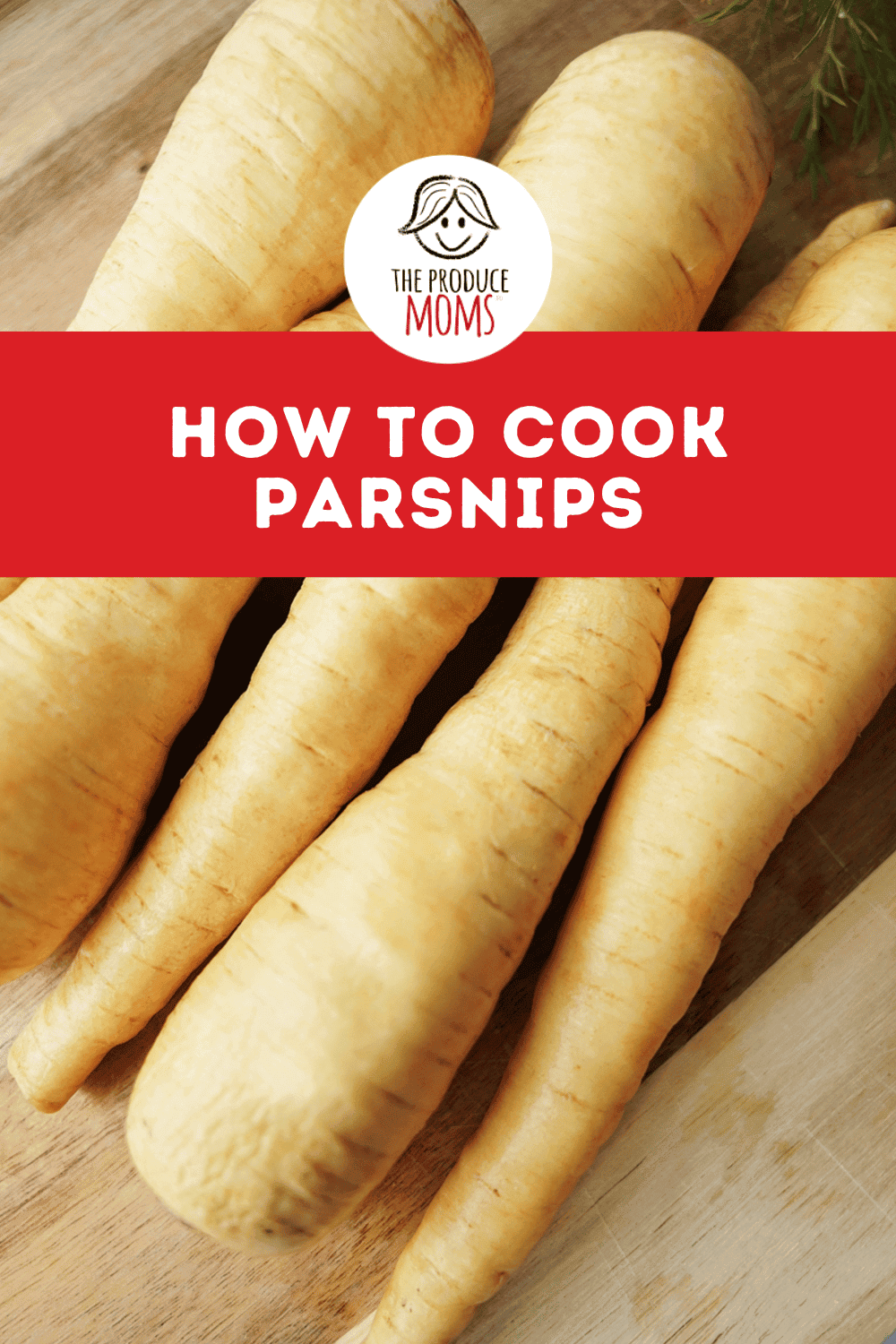How To Cook Parsnips
Jan 20, 2025

This post may contain affiliate links. Please read our disclosure policy.
Have you ever wondered how to cook parsnips?
Parsnips, with their sweet, earthy flavor and versatile texture, are often overlooked for more common root vegetables like carrots and potatoes. However, this underrated veggie is easy to prepare. Plus, it is packed with nutrients.
Whether you’re roasting, mashing, or incorporating them into soups and stews, parsnips can bring a delicious depth of flavor to a variety of dishes. We will share all of our tips and tricks on how to select, store and serve parsnips.
From simple side dishes to hearty mains, parsnips can be enjoyed in countless ways. When cooked properly, their naturally sweet taste and creamy texture make them a perfect substitute for other root vegetables in many recipes. Ready to give parsnips a try? Let’s dive in!

What Is A Parsnip?
Parsnip is a root vegetable closely related to carrots. It has a pale, ivory-colored skin and a slightly more elongated shape. Belonging to the Apiaceae family, which also includes parsley, fennel, and celery. Parsnips are known for their sweet, nutty flavor that becomes more pronounced when cooked.
Despite their mild sweetness, parsnips have a slightly earthy undertone that sets them apart from other root vegetables. Parsnips are high in fiber, vitamins, and minerals like potassium and folate.
Whether roasted, mashed, or added to soups and stews, parsnips can add both depth and a subtle sweetness to your meals, making them a perfect vegetable to experiment with in your cooking.

How To Select Parsnips
Selecting the perfect parsnip is key to ensuring you get the best flavor and texture for your dish. Here are some simple steps to help you pick the best parsnips whether you get them at your local grocery store or farmers’ market:
Look for Firmness: Choose parsnips that feel firm to the touch. Avoid any that are soft, bendable, or have visible wrinkles, as these are signs of age or improper storage.
Check for Smooth Skin: The skin should be smooth, with minimal blemishes or cracks. Some minor discoloration is normal.
Pick Medium to Small Sizes: Opt for medium-sized parsnips rather than large ones. Smaller parsnips tend to be more tender and flavorful.
Examine the Color: Look for parsnips with a creamy, pale ivory color. Avoid those that are too yellow or brown, as this can indicate age.
Consider the Leaves: If the parsnips still have their greens attached, check that they look fresh and vibrant.
By following these simple tips, you’ll ensure you’re selecting the best parsnips for your cooking needs, whether you’re roasting, mashing, or adding them to a stew.

How To Store Parsnips
Storing parsnips properly is key to maintaining their freshness and flavor for as long as possible. Here are some helpful tips to ensure your parsnips stay fresh.
Keep Them Cool: Parsnips should be stored in a cool, dry place. They can be stored in the refrigerator for 2-3 weeks. Like many veggies, they are best stored in the crisper drawer. If you’re storing them at room temperature, make sure they’re in a cool spot away from direct sunlight or heat sources.
Avoid Moisture: Excess moisture can cause parsnips to spoil faster, so make sure they’re dry before storing them. If the parsnips are wet, pat them dry with a paper towel or cloth before placing them in a storage container.

Store in a Paper Bag or Perforated Plastic Bag: To maintain air circulation and prevent moisture buildup, store parsnips in a paper bag or a perforated plastic bag.
Remove Greens: If your parsnips still have their green tops attached, it’s best to remove them before storing. The greens draw moisture from the root.
Freezing for Long-Term Storage: If you want to store parsnips for an extended period, freezing is a good option. First, peel and chop the parsnips into your desired sizes, then blanch them in boiling water for about 2-3 minutes. After blanching, cool them quickly in ice water, drain, and freeze them in an airtight bag or container. This can keep them fresh for up to 6 months.
By following these simple storage tips, you can keep your parsnips fresh, flavorful, and ready for use in all your favorite recipes.
Peeling Parsnips

Peeling parsnips is really simple, but it’s important to do it carefully to avoid wasting any of the edible roots. Using a vegetable peeler, start at one end and peel downwards, working your way along the length of the root. The skin of a parsnip is relatively thin and can be easily removed.
If the parsnip has any blemishes or tough spots, use the tip of your peeler or a small paring knife to trim them off. Once peeled, you can cut the parsnip into your desired size, whether for roasting, mashing, or adding to soups. If you’re planning to cook them with the skin on, be sure to give them a thorough scrub to remove any remaining dirt.
Ways To Enjoy Parsnips

As we’ve mentioned many times, parsnips are incredibly versatile and can be enjoyed in a variety of ways. Below you will find different ways to enjoy parsnips, each showcasing their natural sweetness and creamy texture:
Roasted Parsnips: Roasting is one of the most popular and delicious ways to cook parsnips or any root vegetable. Simply cut them into evenly sized pieces, toss with olive oil, salt, and your choice of herbs and roast.
Mashed Parsnips: For a creamy and comforting side dish, mashed parsnips are a fantastic alternative to mashed potatoes.
Parsnip Fries: For a healthier twist on traditional fries, try making parsnip fries. Cut parsnips into thin strips, toss with olive oil, salt, and pepper, and bake them. We also have a great recipe for rutabaga fries.
Soups and stews: Parsnips make an excellent base for a creamy, comforting soup. Parsnips can add depth and flavor to stews. They hold up well in long-simmering dishes, becoming tender without falling apart.
Salads: For a light and refreshing dish, try a raw parsnip salad. Peel and julienne the parsnips, add in other veggies, and toss them with a tangy dressing.
Parsnip Chips: Similar to potato chips, parsnip chips are thinly sliced parsnips baked or fried until crispy. We also love radish chips as an alternative.
Puree: The sweet, earthy flavor of parsnips pairs beautifully with other fruits. Purees are great for baby foods or as a garnish to your favorite protein.
For even more parsnip recipes, follow The Produce Moms’ Parsnip Pinterest board. Enjoy!






